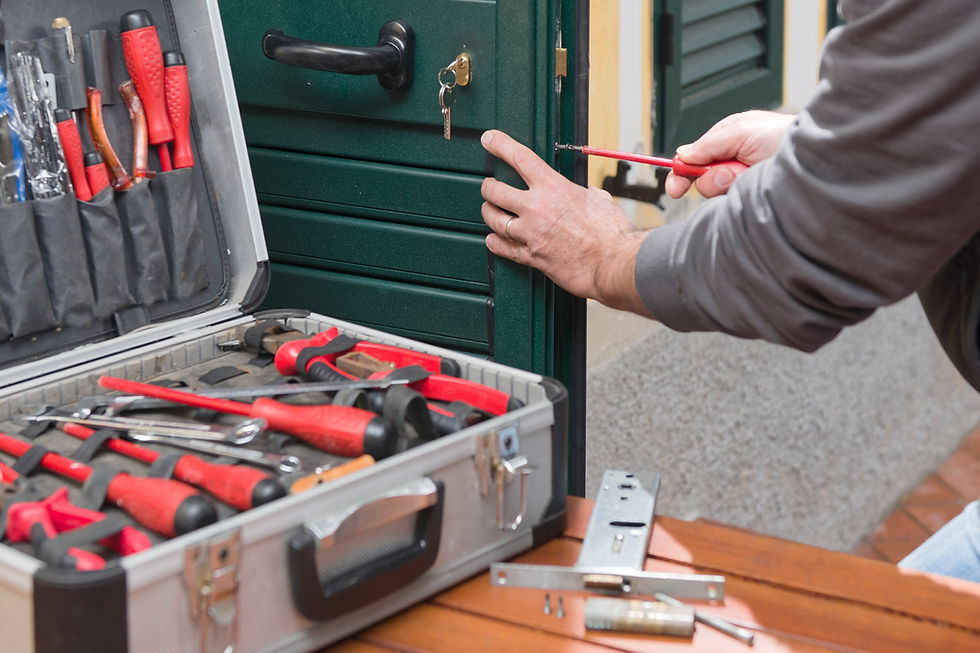
Keeping track of tools on busy jobsites is a daily battle. Contractors often carry dozens of items across multiple locations, and without a reliable system, tools go missing — sometimes permanently. Whether it's a power drill left behind or a set of wrenches misplaced between tasks, every lost tool costs money, delays the work, and adds stress to the day.
For solo tradespeople, the problem is frustrating. For large teams, it's overwhelming. Tracking by memory or checklists is unreliable. Tools are moved between trucks, tool bags, and work areas, and when you're in a rush to wrap up a job, one overlooked item can slip away unnoticed. Traditional systems fail to provide real-time oversight, leaving contractors exposed to losses and inefficiency.
Toolcase was designed to change that. With smart RFID integration, dynamic alerts, and a user-friendly mobile app, it offers a hands-off way to track, organize, and manage tools without disrupting the workflow. It helps contractors stop losing time, money, and equipment.
Inventory Chaos in Tool-Heavy Jobs
Contractors don’t just carry tools — they move with mobile workshops. From drills and meters to levels, cutters, and specialty gear, the average toolbox has more value in it than most people’s laptops. But unlike digital assets, physical tools are scattered, often unmarked, and vulnerable to accidental loss or theft.
When there’s no system in place, you rely on habit and hope. You hope every tool made it back into the bag. You trust that nobody grabbed your gear by mistake. But that method breaks down quickly on large, shared worksites. Add subcontractors, overlapping crews, and high turnover, and it becomes nearly impossible to manage tools consistently.
Toolcase eliminates that chaos by tagging each item with a unique RFID identifier. Once a tool is registered, the system keeps track of it — automatically. There’s no need to rely on memory or guesswork. Every tool is monitored, logged, and accounted for in real time.
Toolcase as a Universal, Cross-Compatible RFID Solution
What makes Toolcase stand out isn’t just its tracking — it’s the flexibility behind it. The RFID reader is compatible with both active and passive tags, including major third-party systems like Dewalt®, Tile, and AirTag. That means contractors don’t have to overhaul their existing tools or switch to proprietary tech. They just add Toolcase to what they already use.
The system uses dynamic triangulation to determine exact tag locations, down to 5 mm accuracy. This allows users to locate items inside bags, trucks, or jobsite areas quickly and confidently. The hardware is rugged, waterproof, and designed to survive real-world abuse. It mounts directly inside toolboxes or bags, with no complicated setup or cabling.
With wide compatibility, extreme precision, and durable design, Toolcase fits right into the contractor’s daily routine — without creating extra steps.
Going Beyond Tracking With Toolcase’s Built-In Inventory Features
Toolcase is more than just a location tracker — it’s a full inventory management system built directly into a compact device and mobile app. From the moment a tool is tagged, the app stores its data, image, and assignment to a specific toolbox. This allows contractors to create accurate, real-time inventories without manual spreadsheets or unreliable memory.
The app uses AI to recognize tools from photos, auto-generating labels that save time during setup. Need to check if anything’s missing? You can do it instantly from your phone — or even without your phone, by pressing the Quick Check button on the RFID device. It’s fast, intuitive, and eliminates the time-consuming process of hunting for items one by one.
Toolcase also works as a mobile power bank, giving tradespeople an extra layer of utility on the job. Need to charge your phone while reviewing inventory? Done. This integration of hardware and software turns Toolcase into a multitool for tool management — one that saves both time and frustration.
From Frustration to Full Control With Toolcase
Tool loss doesn’t have to be an accepted part of the job anymore. With Toolcase, contractors gain control over their inventory without adding complexity to their day. It’s a seamless blend of smart technology and real-world practicality — no overengineering, no steep learning curve.
By combining precise RFID tracking, universal tag compatibility, and intelligent inventory features, Toolcase transforms how tools are managed, tracked, and protected. For solo workers, it reduces mental load. For teams, it brings structure and accountability. For everyone, it prevents costly mistakes that hurt both the budget and the schedule.
In an industry where time is money and tools are everything, Toolcase is the quiet upgrade that changes everything, from day one.





